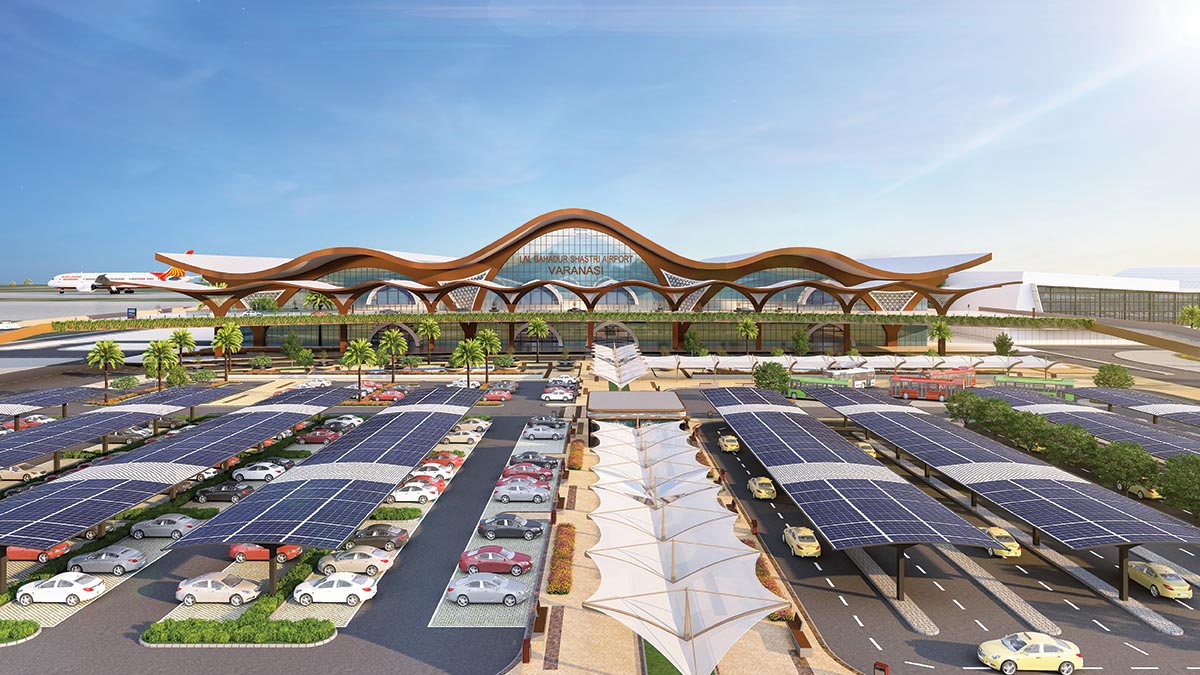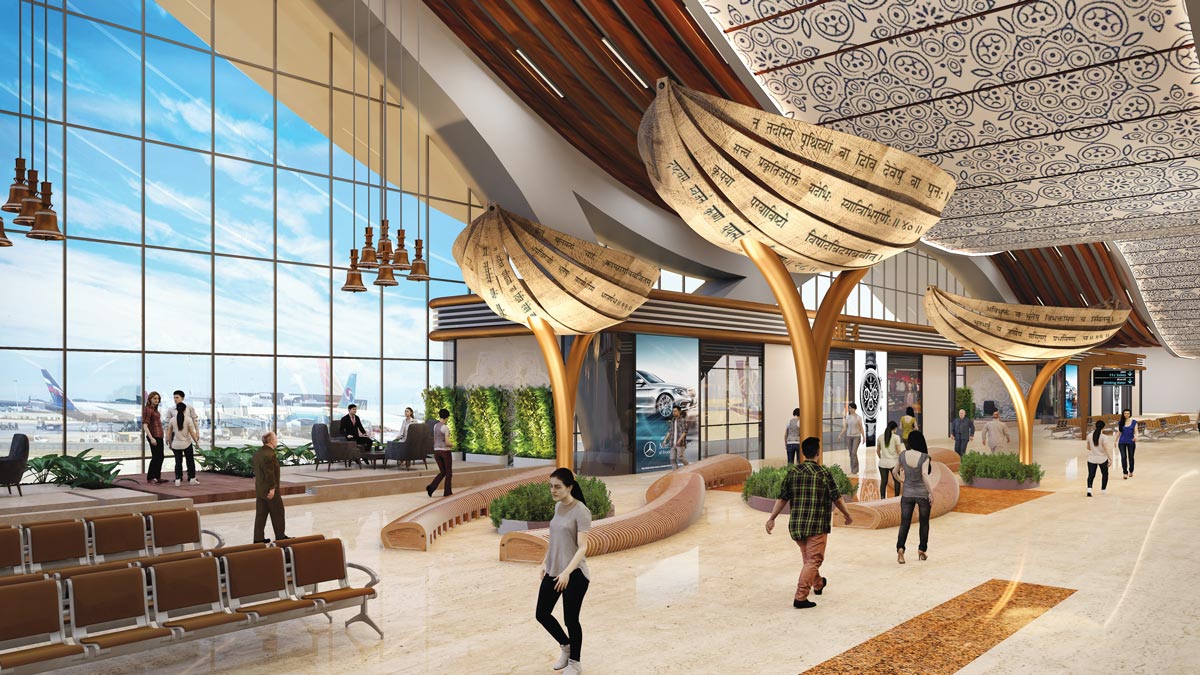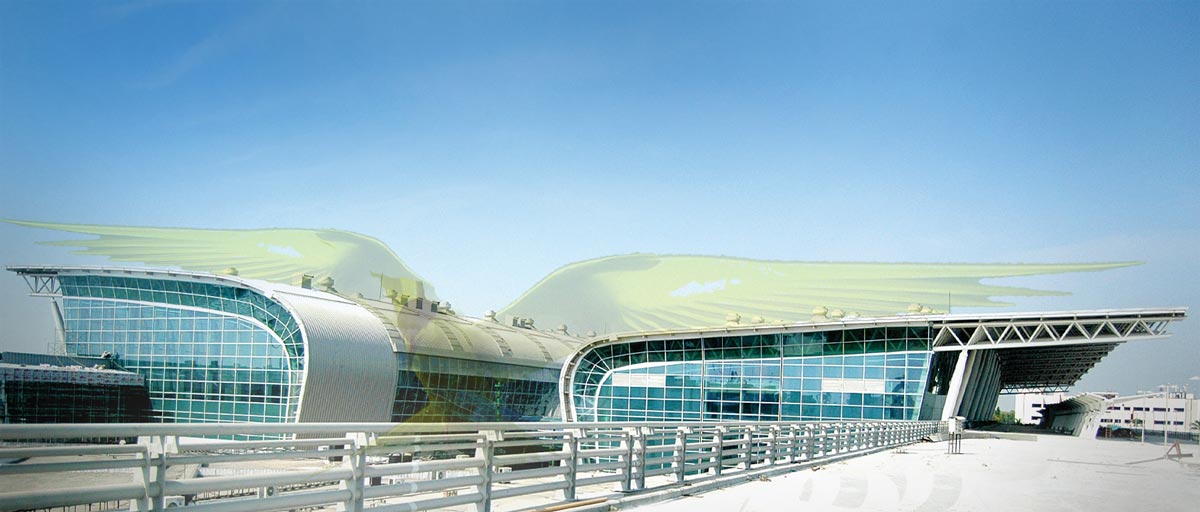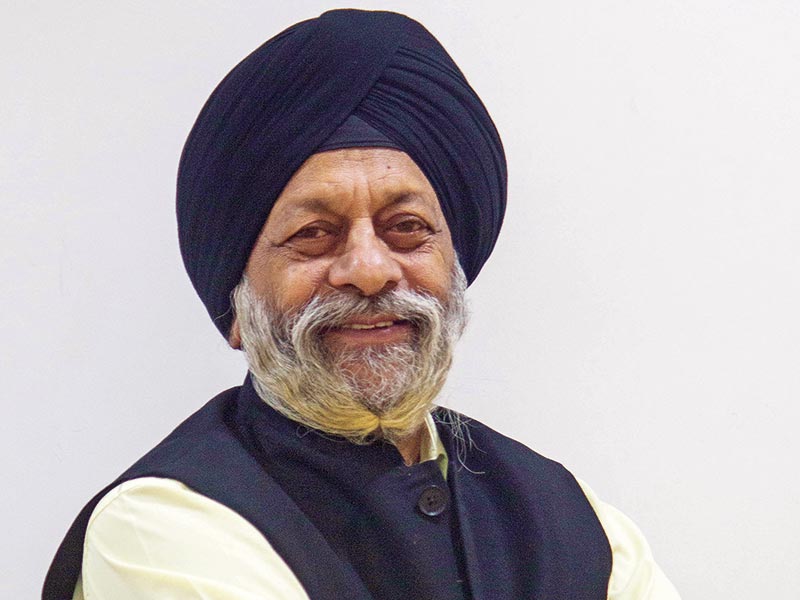Kritika Juneja: Initially, airports were considered as transit points only, but your firm has bought about an architectural reformation by combining the essence of Indian culture with a play of structure and form in their architecture and design. One such example is the Varanasi Airport where the Banarasi saree pattern, moss walls, and boat shaped sculptures present a uniquely crafted look of the city of Varanasi. How do you give shape to your design concept while maintaining the identity of the airport in the context of its location?
Prof. Charanjit Singh Shah: The architecture in today’s context underlines global empowerment and perhaps not global intervention. When designing an airport, we need to address the architecture and the built form while respecting the place and the people of the city/state in which it is being built, and bring a sense of belongingness for the user.
We were very ambitious in the initial stage and we created dynamic spaces. The airports were planned with large spans and mega structures like the Chennai Airport, and the very complex structure of the Raipur Airport. In the Vadodara Airport, we created a simplistic, sustainable form.
The process of designing various airports was a great learning experience for us; we realised that the form needs to be vocalised and given a distinct identity. And that is how there was a transformation within us to create architecture that belongs to the place and the people and is rooted in the culture of the place. Based on this new understanding, we then designed the Shirdi, Bhubaneshwar and, more recently, the Varanasi airports.

Varanasi city is the gateway to the architecture of temples, Hindu traditions, culture, and religious beliefs, the holy river Ganges, and silk sarees, and all this needed to be shown. Hence, the architectural vocabulary of the Varanasi Airport reflects all of this. We created a wavelike structure, which is very fluid, and draws inspiration from the river Ganges. In the interiors we have showcased various art forms like boats, Sanskrit shlokas, false ceiling patterns, carpeted floorings, and the rich silk sarees – all of which speak the language of the city.
I believe that, yes, this is architecture that breathes and embodies nature. It’s like putting soul into a building and making it vibrate with life, and transforming the space with the elements derived from the heart of the city, which bring a strong sense of belongingness and with it an almost meditative experience for the travellers.

Kritika Juneja: Creating a large structure that must remain true to its architectural concept while retaining its dynamic character, apart from serving its basic functional purpose, must be extremely challenging, no doubt. What advanced engineering and technologies were incorporated to create the airports?
Prof. Shah: In large span structures as seen in mega projects, use of advanced technology is very important. We take a holistic approach when designing buildings of such magnitude, so much so that sometimes the vocabulary of the structure is transformed into the vocabulary of the architecture - much like a concept that develops from an engineering innovation and transforms into an architectural concept. And this is what gives birth to the complexity of the structures and determines their shape and dimensions, particularly, airports. I would say that the complexity of form is transformed into the functionality of the space.
King of Airport Design
Prof Charanjit Singh Shah is a practicing architect, planner, author, scholar, educationist, teacher, art & architecture critic with 5 decades of experience. He is the author of many books on architecture, the most recent being ‘Redefining Indian Sustainable Smart Cities’. He has spearheaded some landmark projects in India such as the Chennai Airport, Raipur Airport, Goa Airport, Vadodara Airport, and Times Square Mall, Raipur. His firm, Creative Group, has designed multimodal hubs for Ahmedabad-Gandhinagar Metro, Lucknow Railway, Kota Railway, the master plan for the city of Jamshedpur, and most recently, the iconic Terminal Building for Kartarpur Corridor Project, which was inaugurated by Shri Narendra Modi in November 2019.
Kritika Juneja: How do you address the requirement for efficient and easy to access services while designing an airport?
Prof. Shah: Services should not be looked at in isolation; in fact, services are an integral part and parcel of the complete design process. So, we need to take a holistic approach so that all the elements of applied architecture are put into effect.
Kritika Juneja: You have designed various airports in India and abroad – each with a distinct design and character. What was your inspiration and thought process when planning the architecture and design of airport projects in different cities and states?
Prof. Shah: In the design process, each and every ingredient that you want to use should be studied in detail. Since every place has its context, we believe that architecture which we call ‘global’ will lack a social or cultural context. This is the reason why we incorporate the cultural ethos of the place into our airport designs.
In landmark buildings you will see reflected the various civilisations and their architecture – be they Roman, Greek, Indian etc. Today, modern structures that reflect a particular civilisation or era, and (at the same time) to fulfil their functional purpose, must incorporate the latest technology, use modern composite materials, and orient the buildings as per the climatic conditions of the place. These buildings, when adorned with the elements that reinforce the cultural aspects of the place, are imbued with a distinct character that cannot be copy pasted into another airport design. And this is the principle we follow when designing an airport in any city, state, or abroad, and the reason why the airports designed by us appear so variegated in form and structure, while being extremely modern in their functionalities.

Kritika Juneja: Though the functional aspects of every airport such as entry, baggage check-in, etc, are the same, somehow the airports designed by you have a distinct character - maybe in terms of elevation, form, interior space, or circulation.
Prof. Shah: The hierarchy of the spaces within an airport with the same commonality of functions can be different in different airports. However, the concept of space and how it should be used optimally while being perceived as open, warm, aesthetically pleasant, and comfortable, is very important, and very challenging too for the architect, whose aim is also to bring a unique experience of the space for the users. We believe that the differences that you see in the airports designed by us lie in the unique environs that we have created for the passengers as they move from one functional place to another.
Kritika Juneja: Covid-19 has impacted us in numerous ways; under the new normal, where social distancing has become necessary, how you think the design of airports would be impacted in the future?
Prof. Shah: Though Covid-19 has had an impact on the functionality of the airports in many ways, I don’t think that it is a permanent disease that calls for a permanent solution. Socialising cannot be ignored, so, some day this call for social distancing will be removed. But people today, having experienced the fallout of crowded places, will be more cautious and prefer to keep a safe distance from each other.
















